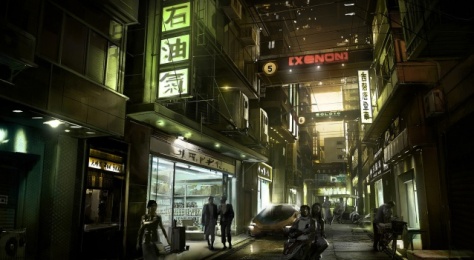
When it was released in 2011, Deus Ex: Human Revolution had a collector’s edition of sorts in the Augmented Edition. Available for the Xbox 360, PS3, and PC versions, the Augmented Edition contained a fancier game case boasting alternate box art, a slim art book, and a bonus DVD containing some extra features. It’s worth noting that I’m discussing the American version as some of the European versions contained DLC not present in our release. I’ve noticed the package is still available new on sites like Amazon, although for someone who has yet to play the game, I’d recommend the recently released Director’s Cut at this point.

The bonus DVD is the most worthwhile part of the Augmented Edition in my mind. I say that because of the lengthy making-of documentary included on disc. It follows the studio from its founding (this was their first release) until nearly completing the game. This documentary must’ve been shot before the game’s finalization as it ends in 2010 – the game released in late 2011. Interviews varied from all aspects of the development team so many viewpoints were represented. I was chagrinned that nothing was mentioned about Square Enix’s takeover of Eidos, but I imagine that’s an indication that development continued on hitch free. There’s an interesting tangent about demoing the game to Warren Spector at Gamescom 2010 towards the end which was cool.
Also included on the bonus DVD is the soundtrack in easily extractable MP3 form. I’ve enjoyed listening to the soundtrack thus far. While playing the game I considered it similar to Mass Effect’s. The ambient instrumental music is something I foresee myself writing to in the future. The twelve tracks don’t make up the entire soundtrack, so that’s less than desirable. A motion graphic novel is also present on the DVD as well as a few trailers and storyboards.
The art book was pitiful. I find it such a cheap tactic to tout an included art book, only to discover that its bindings make up more of the book than actual content. If I’m going to fall prey to consumerism, I’d at least like something worthwhile. The artwork on display is stellar, but the art book is tiny and, unless you’re the type to draw inspiration for hours from this type of bonus, it won’t hold your attention for fifteen minutes.

I think the Augmented Edition is a mixed bag. I like displaying the premium box and have or will get much use out of the bonuses included on the DVD. I don’t care for the art book as there just isn’t much to it. At this point, it’s a hard sell if you haven’t played the game. The Director’s Cut includes all of the DLC which will save you extra dough if you purchased the standard or Augmented Edition. But if you’re a super collector, it’s a decent addition to your collection for the right price.







